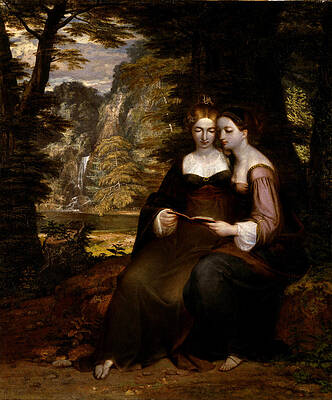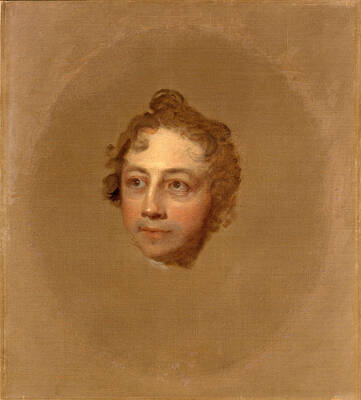Washington Allston
Paintings
Elijah in the Desert
Italian Landscape
Mother Watching Her Child
Hermia and Helena
The Taming of the Shrew
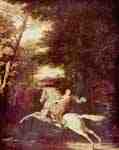

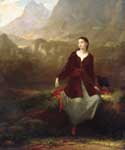
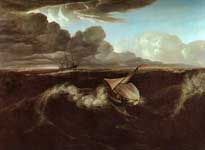
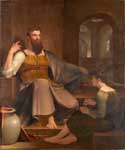
Jeremiah Dictating His Prophecy of the Destruction of Jerusalem to Baruch the Scribe
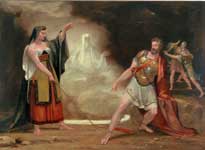



The Dead Man Restored to Life by Touching the Bones of the Prophet Elisha
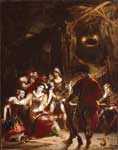
Donna Mencia in the Robber's Cavern
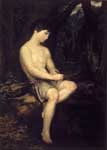
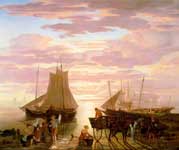
Coast Scene on the Mediterranean
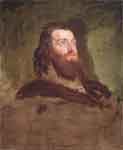
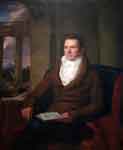
Fine Art Prints | Greeting Cards | iPhone Cases | Tote Bags | Clothing | Lifestyle | Beach ...
Elijah in the Desert
Washington Allston (November 5, 1779 – July 9, 1843) was an American painter and poet, born in Waccamaw Parish, South Carolina. Allston pioneered America's Romantic movement of landscape painting. He was well known during his lifetime for his experiments with dramatic subject matter and his bold use of light and atmospheric color.
Washington Allston, Gilbert Stuart
Biography
Allston was born on a rice plantation on the Waccamaw River near Georgetown, South Carolina. His mother Rachel Moore had married Captain William Allston in 1775, though her husband died in 1781, shortly after the Battle of Cowpens.[1] Moore remarried to Dr. Henry C. Flagg, the son of a wealthy shipping merchant from Newport, Rhode Island.[2]
Named in honor of the leading American general of the Revolution,[3] Washington Allston graduated from Harvard College in 1800 and moved to Charleston, South Carolina for a short time before sailing to England in May 1801.[2] He was admitted to the Royal Academy in London in September, when painter Benjamin West was then the president.[4]
From 1803 to 1808, he visited the great museums of Paris and then, for several years, those of Italy, where he met Washington Irving in Rome[5] and Coleridge, his lifelong friend. In 1809, Allston married Ann Channing, sister of William Ellery Channing.[2] Samuel F. B. Morse was one of Allston's art pupils and accompanied Allston to Europe in 1811. After traveling throughout western Europe, Allston finally settled in London, where he won fame and prizes for his pictures.
Allston was also a published writer. In London in 1813, he published The Sylphs of the Seasons, with Other Poems, republished in Boston, Massachusetts, later that year.[6] His wife died in February 1815, leaving him saddened, lonely, and homesick for America.[7]
In 1818, he returned to the United States and lived in Cambridge, Massachusetts, for twenty-five years. He was elected a Fellow of the American Academy of Arts and Sciences in 1826.[8] He was the uncle of the artists George Whiting Flagg and Jared Bradley Flagg, both of whom studied painting under him.
In 1841, he published Monaldi, a romance illustrating Italian life, and in 1850, a volume of his Lectures on Art, and Poems.[9]
Allston died on July 9, 1843, at age 63. Allston is buried in Harvard Square, in "the Old Burying Ground" between the First Parish Church and Christ Church.
Recognition
Allston was sometimes called the "American Titian" because his style resembled the great Venetian Renaissance artists in their display of dramatic color contrasts. His work greatly influenced the development of U.S. landscape painting. Also, the themes of many of his paintings were drawn from literature, especially Biblical stories.[10]
His artistic genius was much admired by Samuel Taylor Coleridge, and Ralph Waldo Emerson was strongly influenced by his paintings and poems, but so were both Margaret Fuller and Sophia Peabody, wife of Nathaniel Hawthorne.[10] The influential critic and editor Rufus Wilmot Griswold dedicated his famous anthology The Poets and Poetry of America to Allston in 1842.[11] Poet Henry Wadsworth Longfellow, 17 years after Allston's death, wrote that: "One man may sweeten a whole time. I never pass through Cambridge Port without thinking of Allston. His memory is the quince in the drawer and perfumes the atmosphere."[2]
Boston painter William Morris Hunt was an admirer of Allston's work, and in 1866 founded the Allston Club in Boston, and in his arts classes passed on to his students his knowledge of Allston's techniques.[12]
Washington Allston coined the term "objective correlative," which T. S. Eliot described as a situation or a chain of events that acts as a formula and is used in art to evoke emotion.
The west Boston, Massachusetts neighborhood of Allston is named after him.
References
Hubbell, Jay B. The South in American Literature: 1607-1900. Durham, North Carolina: Duke University Press, 1954: 274.
Hubbell, Jay B. The South in American Literature: 1607-1900. Durham, North Carolina: Duke University Press, 1954: 275.
Planters, Pirates & Patriots: Historical Tales from the South Carolina Grand Strand, Rod Graff, Pelican Publishing, 2006
Hubbell, Jay B. The South in American Literature: 1607-1900. Durham, North Carolina: Duke University Press, 1954: 276.
Burstein, Andrew. The Original Knickerbocker: The Life of Washington Irving. Basic Books, 2007:43. ISBN 978-0-465-00853-7
Hubbell, Jay B. The South in American Literature: 1607-1900. Durham, North Carolina: Duke University Press, 1954: 277.
Hubbell, Jay B. The South in American Literature: 1607-1900. Durham, North Carolina: Duke University Press, 1954: 278.
"Book of Members, 1780-2010: Chapter A". American Academy of Arts and Sciences. Retrieved 15 April 2011.
Ware's Lectures on the Works and Genius of Washington Allston (Boston, 1852) and Artist Biographies, Allston (1879).
Vetter, H.F. "Poets of Cambridge, USA". Harvard Square Library (2006). Retrieved 2007-06-12.
*Pattee, Fred Lewis (1966). The First Century of American Literature: 1770–1870. New York: Cooper Square Publishers. p. 279.
Wright, Nathalia. The Correspondence of Washington Allston, Published by University Press of Kentucky, 1993, ISBN 0-8131-1708-9
"Allston's Elijah in the Desert". Smarthistory at Khan Academy. Retrieved January 4, 2013.
Further reading
Allston, Washington, Lectures on Art and Poems, 1850 (facsimile ed., with Monaldi, 1841, 1967, Scholars' Facsimiles & Reprints, ISBN 978-0-8201-1001-1).
----
Fine Art Prints | Greeting Cards | Phone Cases | Lifestyle | Face Masks | Men's , Women' Apparel | Home Decor | jigsaw puzzles | Notebooks | Tapestries | ...
----
Artist
A - B - C - D - E - F - G - H - I - J - K - L - M -
N - O - P - Q - R - S - T - U - V - W - X - Y - Z
Retrieved from "http://en.wikipedia.org/"
All text is available under the terms of the GNU Free Documentation License





